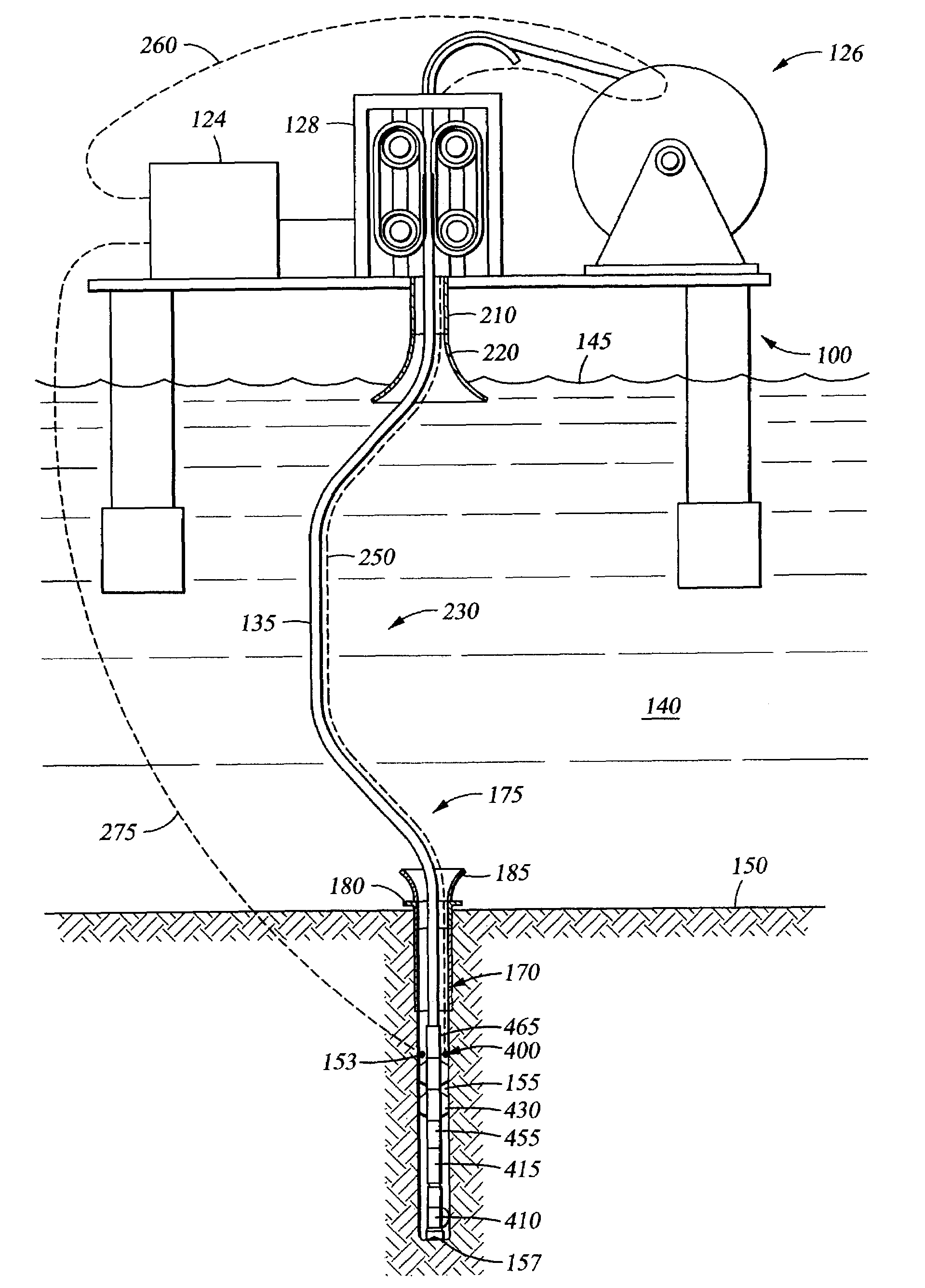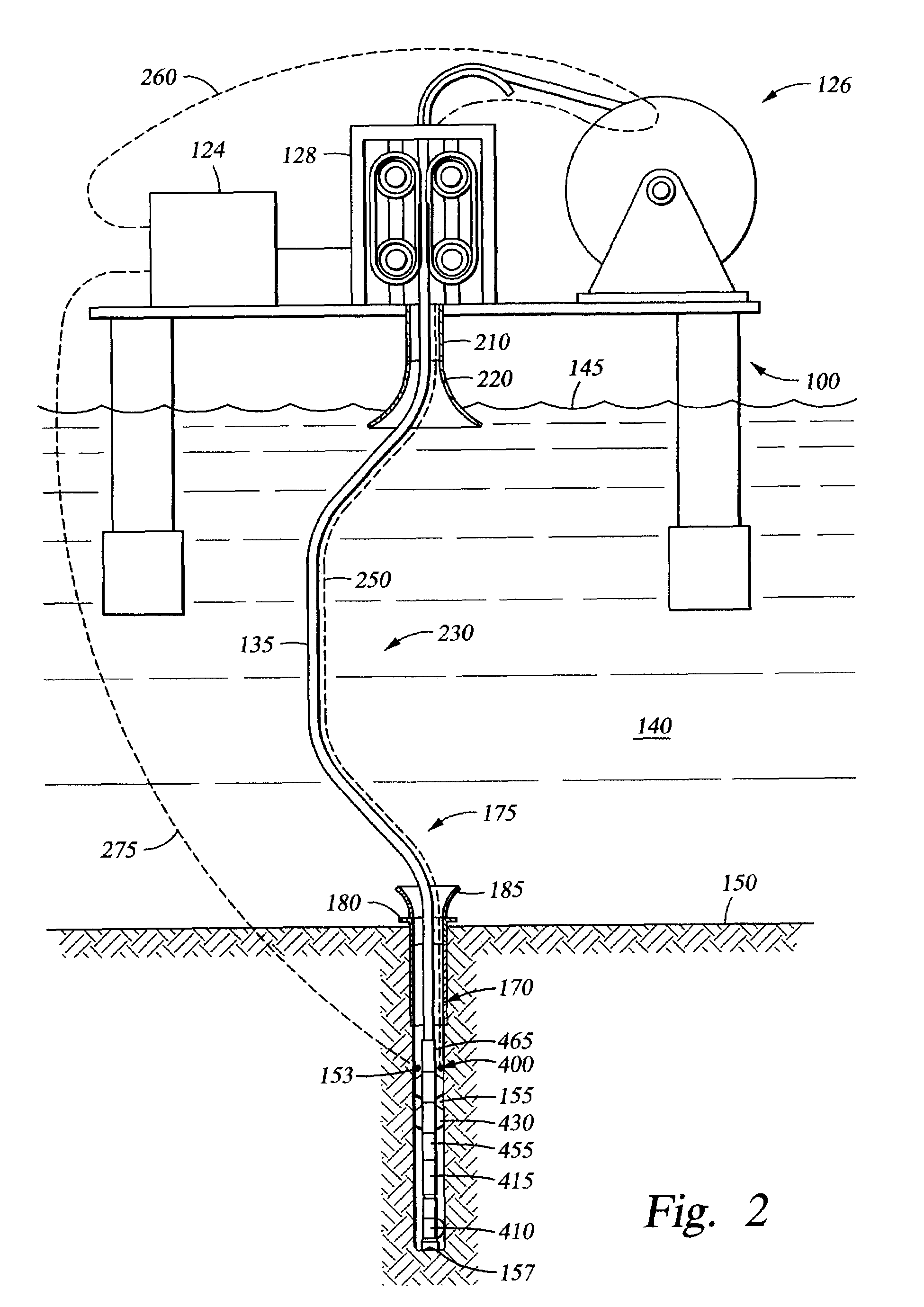Method and apparatus for riserless drilling
a technology of riserless drilling and drilling rigs, which is applied in the direction of drilling pipes, drilling/well accessories, sealing/packing, etc., can solve the problems of increasing the cost of drilling, increasing the weight and space requirements of the drilling rig and floating platform, and increasing the conventional method of riserless drilling
- Summary
- Abstract
- Description
- Claims
- Application Information
AI Technical Summary
Benefits of technology
Problems solved by technology
Method used
Image
Examples
Embodiment Construction
[0038]The present invention is susceptible to embodiments of different forms. There are shown in the drawings, and herein will be described in detail, specific embodiments of the present invention with the understanding that the present disclosure is to be considered only an exemplification of the principles of the invention, and is not intended to limit the invention to that illustrated and described.
[0039]The apparatus and methods of the present invention comprise offshore drilling from a platform using a lightweight drill string suspending a BHA. Various embodiments of the present invention provide a number of different configurations of the drill string, the BHA, the type of platform from which drilling operations occur (i.e. bottom-founded or floating), the depth of the water, and the sizes of pipe components, such as risers and casings. It should be appreciated that the embodiments of the present invention, therefore, provide a plurality of methods for offshore drilling from a...
PUM
 Login to View More
Login to View More Abstract
Description
Claims
Application Information
 Login to View More
Login to View More - R&D
- Intellectual Property
- Life Sciences
- Materials
- Tech Scout
- Unparalleled Data Quality
- Higher Quality Content
- 60% Fewer Hallucinations
Browse by: Latest US Patents, China's latest patents, Technical Efficacy Thesaurus, Application Domain, Technology Topic, Popular Technical Reports.
© 2025 PatSnap. All rights reserved.Legal|Privacy policy|Modern Slavery Act Transparency Statement|Sitemap|About US| Contact US: help@patsnap.com



